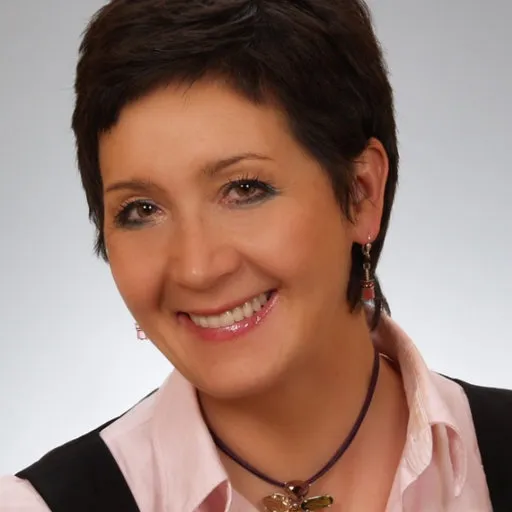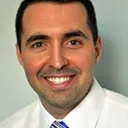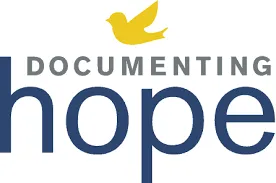Wham, Bam, Autism Scams: Reversing Autism through diet and therapy
Bronwyn Rideout - 14th October 2024
It has been a while since I wrote about pseudoscience and scams around curing Autism, but that doesn’t mean I haven’t been collecting a whopper or two to share.
This time, I am focusing on an article published in the Journal of Personalized Medicine in July 2024:
The Rundown
This is a case report about the treatment regimen that two female toddlers, referred to in the paper as ‘L’ and ‘P’, went through for more than a year. The twins had a history of limited verbal and non-verbal communication, repetitive behaviours, extensive gastrointestinal symptoms, and other common symptoms of Autism. The twins were both premature, and because they were born during the pandemic, their vaccinations were delayed. While some gastro and behavioural traits were reported before pregnancy, it is noted that these symptoms worsened after the administration of catch-up vaccines.
The girls were “diagnosed” with level 3 Autism when they were 20 months old; the level 3 designation means that the children required very substantial support. I write “diagnosed”, as they did not undergo a standard assessment. It is not fully explained, but it appears some modifications were required related to covid precautions. Both twins were assessed using a tool called the Autism Diagnostic Observation Schedule (ADOS-2), and the toddler module has several activities based on play and interactions, such as responding to smiling. This would have been difficult to achieve with mask mandates or contact precautions. As a consequence, diagnostic scores were not recorded, meaning that there was nothing that any post-intervention testing could be compared to.
The twins also underwent a number of out-of-pocket tests, including genome, hair analysis for heavy metals, blood testing for nutritional and autoimmune status, and stool samples. The tests found that the twins had biomarkers for gastrointestinal inflammation, fatty acid imbalances, a variety of nutrient deficits, and possible signs of mould exposure and heavy metal excretion found in the urine tests.
-
The parents worked with an Autism parent coach. It is not clear who they worked with, but the citation linked to this company, Autism Parenting Secrets. This company is run by two parents with expertise in business, marketing, and coaching. It’s obvious that they’re certainly not medical practitioners, as their podcast guests and topics merge fear-mongering with pseudoscience, i.e. “Don’t drink the tap water”, “Breathwork obliterates stress”, “Take a stand for your child with Chiropractic”. The parents have also listened to these podcasts.
-
Based on the influence of the above podcasts and books they read, The parents wanted to remove as many possible environmental stressors as possible. They used a health inventory provided by the Documenting Hope Project to get a comprehensive assessment of the “allostatic load” the twins had.
-
The mother, in particular, utilised webinars and forums offered by the parent group of the Documenting Hope Project, Epidemic Answers (see below for more).
-
The girls attended 20 hours of Applied Behaviour Analysis therapy each week, between 22 and 33 months old.
-
Both twins started with 1 day per week in speech therapy from 24 months, while “L” went for 2 days per week from 30 months.
-
Intense diet and nutrition interventions included:
-
Eliminated sources of glutamate, as per the Reduced Excitatory Inflammatory Diet (REID)
-
Gluten and casein-free
-
Low sugar
-
No exposure to artificial dyes, colours, or ultra-processed foods
-
Consumption of organic, unprocessed, freshly prepared, and home-cooked food from local sources.
-
Rich in tryptophan, vitamins B12, B6, and folate
-
High in betaine and choline
-
Dietary Supplementation
-
Omega-3 fatty acids
-
A multivitamin
-
Vitamin D
-
Carnitine
-
5-methyltetrahydrofolate
-
Bio-individualised homeopathic remedies
-
Lion’s mane mushrooms (spelt mushroosm in the articles)
-
Consultation with a dietician
-
Consultation with a naturopathic doctor
-
Most sessions were with an Occupational therapist specialising in neuro-sensory motor reflex integration.
-
The home was assessed by a building biology environmental consultant for air quality, moisture, mould exposure, and other toxicants.
-
Air was clean
-
Thermal imaging and a moisture meter indicated a window in the twin’s room needed further assessment.
-
Consultation with a developmental optometrist
-
Twin L had regular appointments with a cranial osteopath
-
Home visits with a holistic pediatrician
-
Functional Medicine Doctor for lab tests
-
Part-time nature-based pre-school
Rapidfire skepticism
Even if the study achieved half of what it claimed, it could never claim that it reversed Autism. Autism is a lifelong neurodevelopmental condition that has a strong genetic component. At best it could be said that the twins demonstrated improvement in their ability to suppress their Autistic traits, and to display more socially acceptable play behaviours.

Dr. Svetlana Masgutova
Practically every intervention listed is based on pseudoscience, or supported by studies conducted on very small populations. While occupational therapy can be beneficial to Autistics, the particular therapy used - neuro-sensory motor reflex integration or MNRI - could be the subject of its own skeptical article. Developed by Dr. Svetlana Masgutova, MNRI consists of an assessment of motor reflexes and treatment based on a series of repeated exercises to help the body get organised on a “deep level” and eliminate the “primitive reflexes” that are evident with some disabilities. These exercises improve functional movement and sensory regulation, and help the client reach their functional potential. Masgutova claims that her method can benefit a wide range of disabilities aside from Autism, including ADHD, Dyslexia, Oppositional Defiance Disorder (this is listed twice), Cerebral Palsy, and PTSD. However, a scoping review of studies on MNRI efficacy found that levels of evidence were low, and conducted either by the developer or affiliates of the MNRI organisation.
The sheer number of interventions makes any conclusion fairly meaningless due to barriers in reproducibility, and because the main measure the researchers sought, behaviour change, may have been simply due to one intervention - Applied Behaviour Analysis or ABA.
Each of these treatments and interventions would have likely incurred a significant cost, and as with other Autism scams I’ve covered, feed on and exploit the fears that parents have about Autism. Parents are also likely to be desperate to see a return on the tens of thousands of dollars they’ve spent to help their kids. And it’s possible that, at least for one of the twins, it wasn’t even necessary. Given the unorthodox assessment, it is possible that Twin P was misdiagnosed. Another point is that while autism diagnosis becomes more stable as children age, only 84% of children diagnosed around age two retain their diagnosis as they age; while most Autistic children retain their diagnosis, there is a small group who lose or stop expressing enough core symptoms, and no longer meet the diagnostic threshold. The change recorded on the ATEC assessment may have nothing to do with the interventions, and everything to do with the child growing up.
The lead author

Christopher D’Amano has a PhD in epidemiology from the University of Maryland’s School of Medicine; a legitimate institution. He holds multiple appointments at said university, as an assistant professor at the Center for Integrative Medicine within the departments of Family and Community Medicine and Epidemiology and Public Health. Integrative Medicine is a well-trodden bugbear for skeptics, seen as the infiltration of complementary and alternative medicine and practices into traditional medical practice.
The Co-authors
While D’Amano is the lead, the bulk of the work was not done by D’Amano. Looking at the author contribution section, the workload was divided thusly:
“Conceptualization, C.R.D., J.L.N., E.L., and H.T.R.; methodology, C.R.D.; investigation, C.R.D., J.L.N., E.L., and H.T.R.; data curation, J.L.N., H.T.R., S.N.M., and M.R.H.; writing—original draft preparation, C.R.D.; writing—review and editing, J.L.N., E.L., H.T.R., and S.N.M.; visualization, S.N.M. All authors have read and agreed to the published version of the manuscript”
S.N.M, Sarah N. Miller, is the only co-author that is only connected to the Department of Family and Community Medicine at the University of Maryland’s School of Medicine. D’Amano is as well, but he is also affiliated with an organisation called Documenting Hope, along with the four other co-authors, who took part in the conceptualisation, data curation, investigation, and editing of the paper.

Documenting Hope is a multi-year research project of Epidemic Answers, a research organisation focused on helping children with Autism and other chronic diseases. The organisation also believes that these conditions are caused by the total toxic load of today’s modern living. The intent of the Documenting Hope project is to analyse the environmental causes behind these chronic conditions, and it appears that this Autism study might be part of a larger programme of 18-month interventions on a small group of children to reverse their chronic conditions. It is a multi-year research and media initiative that we likely haven’t heard the last of yet.
With the publication of this Autism reversal paper, the organisation has lost no time in promoting that it was peer-reviewed and printed in The Journal of Personalized Medicine. Since its founding in 2011, this open access journal has published nearly 6,000 papers, which puts into question the quality of its reviewers and overall quality control, especially when you see obvious spelling mistakes like “mushroosm”. But, personalised medicine appears to be a growing field in its own right, focused on providing personalised treatments based on genetic tests and genome sequencing. While the concept of this sounds exciting, as we see in the D’Amano paper hyper-personalised care can trend into the realm of doing too much, and may fall into the realm of doing more harm through pseudoscience than helping.
The fallout
When the paper was released, both the Telegraph and the Daily Mail reported on it without critique, with the latter calling it a ‘miracle trial’ and pioneering research.
That was July 20-21st, 2024.
Then the study got slammed, as both bad science and for its outdated outlook on Autism. Reuters posted a piece fact-checking the article’s claims, while The Telegraph took longer to issue its mea culpa by publishing an article by Autistic writer Joyce Yang. But that hasn’t stopped the article from being celebrated and reposted without the accompanying criticism.
Final thoughts
The paper is out and out garbage, but if it is true that Documenting Hope is conducting multiple studies and exploring multiple conditions, then kiwi skeptics can expect to read much more about them soon.